Sorting clothes is a daily chore for many, but not everyone knows how to do it properly. This lack of knowledge can lead to damage to your expensive and beloved garments.
To prevent this, avoid the following common mistakes when organizing your wardrobe to prolong the lifespan of your clothing.
1. Not Sorting Clothes by Season
Do you tend to toss all your clothes into the closet, only to frantically search for a particular item when you need it? It’s time to learn how to organize your wardrobe more efficiently so you can easily find what you’re looking for.
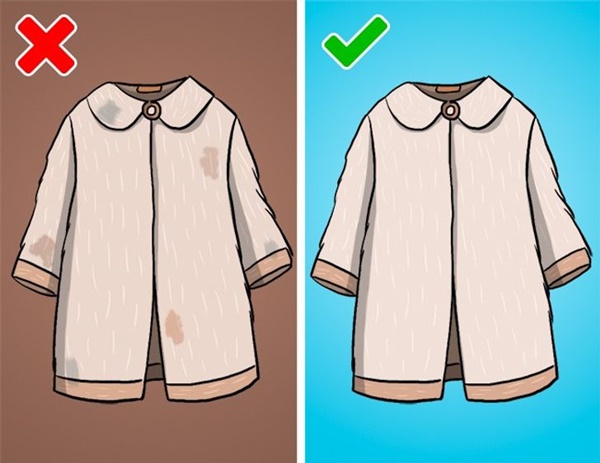
Before sorting your clothes by season, make sure they are all clean and dry. Avoid putting unwashed garments back into your closet, as fur clothing can lose its softness, and leather items may fade and lose their luster. Additionally, consider placing insect repellents, such as camphor, in your closet for extra protection.
2. Using Vacuum-Sealed Bags for All Clothing
While vacuum-sealed bags are gaining popularity, this storage method is not suitable for fur or leather garments. These materials require ventilation, and sealing them in airtight bags can cause odors and stickiness, especially for fur, which may be damaged.
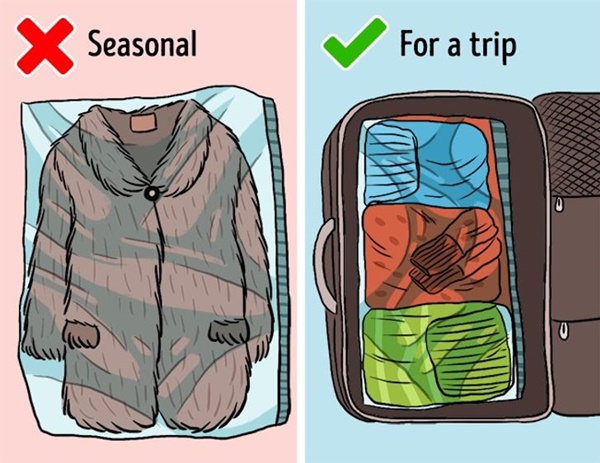
3. Using Inappropriate Hangers
Don’t skimp on hangers. Avoid stacking multiple layers of clothing on a single hanger, as this can lead to a lack of air circulation and potential damage. Choose hangers that are appropriate for the size of your garments.
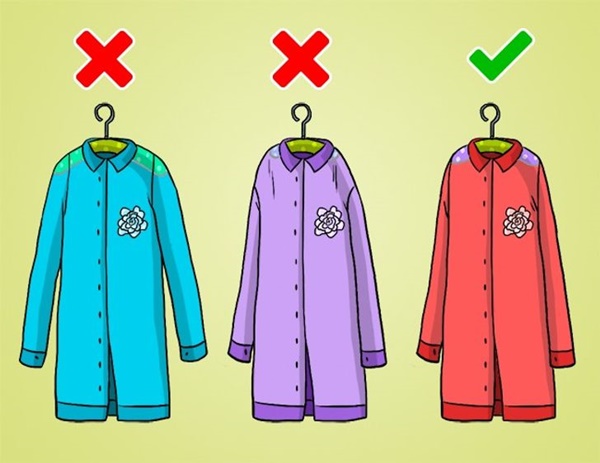
Select hangers based on the type and weight of your clothing. For example, don’t hang heavy coats on thin hangers. Additionally, avoid hanging silk garments on old wooden hangers, as the wood can wear down the delicate fabric.
4. Improper Storage of Knitwear
Refrain from hanging knitwear on hangers, as this can cause stretching and distortion. Instead, fold and store these items in drawers or on shelves. Place them in a separate compartment within your wooden dresser to maintain their shape.
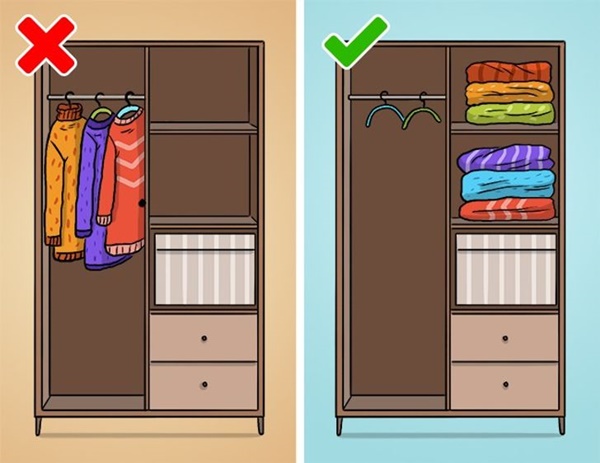
5. Hanging Long Dresses on Hangers
To avoid creases and floor contact, drape your evening gowns and long skirts over horizontal bars. This simple trick will save you significant time on ironing.
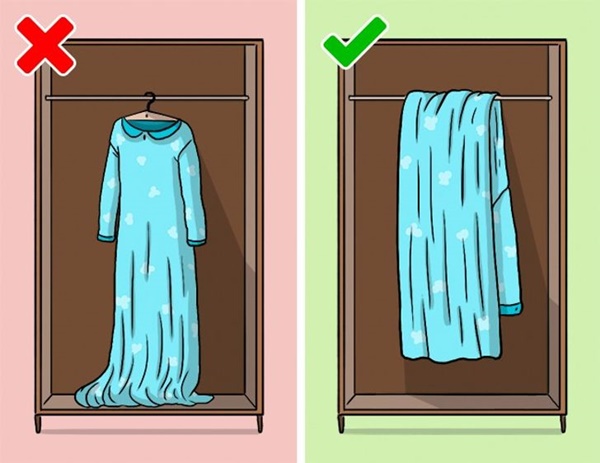
6. Hanging Pants on Movable Horizontal Bars
While modern closets often feature movable horizontal bars, avoid hanging long pants on these. The constant movement can cause the fabric to stretch. Instead, use hangers that can support the full length of the pants to maintain their shape.
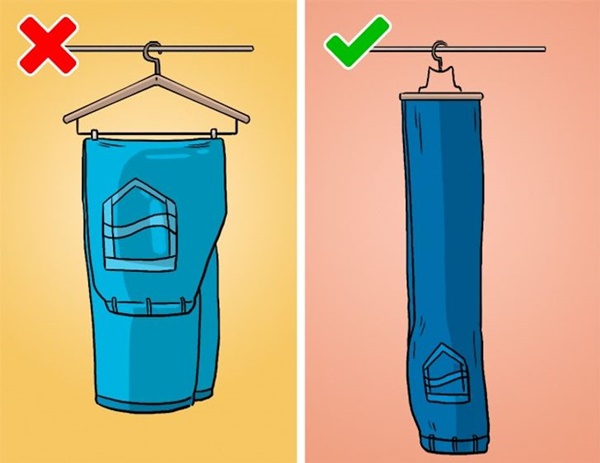
7. Folding Bras in Half
Folding bras in half can damage essential components that support and enhance your silhouette. Instead, stack your bras on top of each other to avoid distortion.
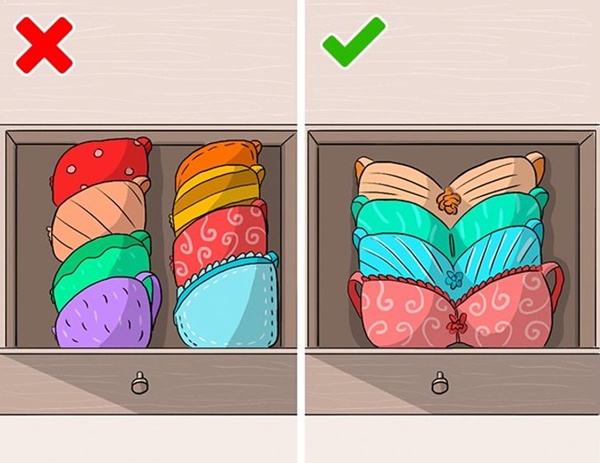
8. Storing Dress Shirts in the Closet
Hang stylish dress shirts, blouses, and silk dresses on appropriate hangers. However, fold and store knitwear in drawers to prevent stretching.
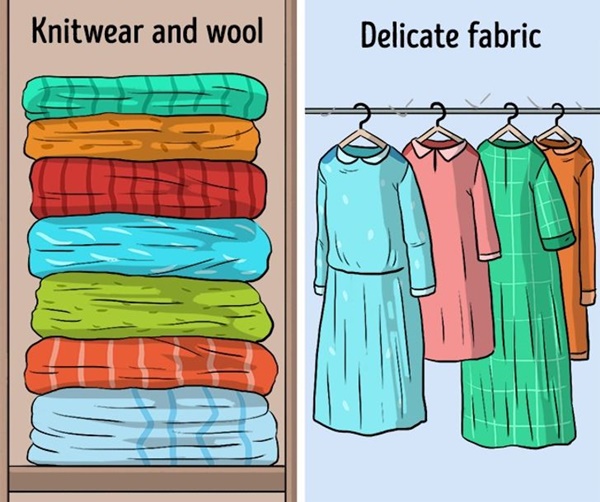
9. Hanging Multiple Garments on a Single Hanger
When closet space is limited, you might be tempted to hang multiple items on a single hanger. However, this practice can lead to damage to your clothing.
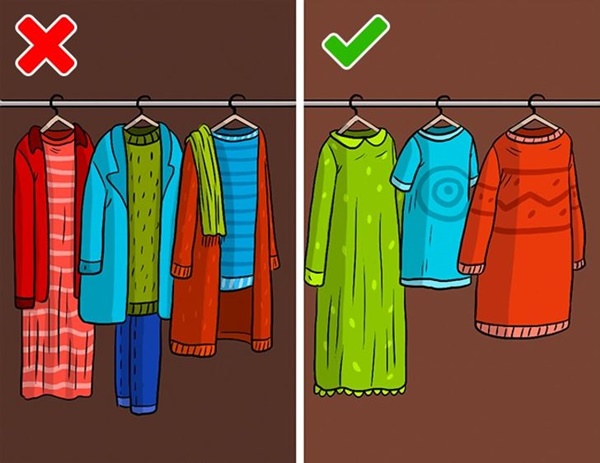
10. Failing to Zip or Button Up Garments Before Hanging
Always zip and button up your clothes before hanging them in the closet. This simple step helps maintain the shape and appearance of your garments.
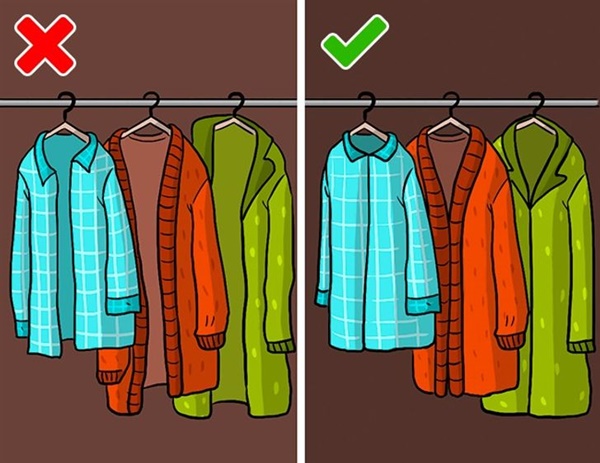
Translated from Nhịp Sống Việt
The Secret Ingredient to a Husband’s Admiration: A Wife’s Clever Rice Trick
The prolonged pandemic has instilled a sense of preparedness in all of us, especially when it comes to stocking up on non-perishable goods. And one staple that we absolutely cannot do without is rice. However, storing rice for extended periods without proper preservation methods can lead to an infestation of pests, which could potentially harm the health of your family.
Clothes: A Guide to Clean, Quick, and Soft Laundry’>The Art of Hand-Washing Clothes: A Guide to Clean, Quick, and Soft Laundry
Laundry may seem like a simple task, but there’s a real art to hand-washing your clothes. It’s all about taking the time to ensure your garments are thoroughly cleaned, colors are preserved, and fabrics remain intact. Discover the ultimate guide to mastering the art of laundry and become a pro at keeping your clothes looking their best.
The Ultimate Hack to Peel an Orange Like a Pro
The pesky white pith that clings to citrus fruit can be a nuisance to many. While it may be tempting to simply peel and discard the fruit, taking the time to remove this pith can seem like a tedious task. However, with the right technique, you can efficiently remove this unwanted layer and enjoy your citrus fruit to the fullest.






































